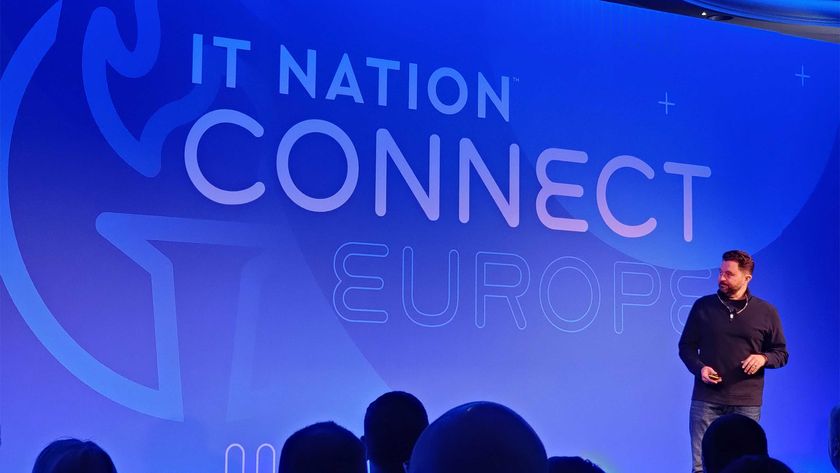Senior AWS dev claims Amazon is quietly trying to encourage employees to quit in a push to covertly cut numbers
Tech giants including Meta have been accused of “quiet firing” - or “silent sacking” - in recent years, and now a senior AWS developer claims the firm is pursuing a similar strategy

A senior developer at AWS has claimed the tech giant is conducting a “silent sacking” campaign in a bid to covertly cut numbers while avoiding negative press in the wake of mass layoffs.
Justin Garrison, who served at AWS for four years, outlined his claims in a recent blog post, illustrating how he felt deteriorating workplace conditions and the continual repurposing of development teams at the company were passive methods by which firms can push employees to quit.
The claims by Garrison raise serious questions around the way large tech firms are managing their workforces amidst a climate of hiring freezes and layoffs in the sector.
The practice of weaponizing workplace conditions to drive employees to quit, informally described as “quiet firing” or “silent sacking”, is a term that has entered the corporate lexicon in recent years. This tactic, it is claimed, has been employed by some companies who don’t want press coverage of layoffs to spook shareholders.
Firms can also avoid paying expensive severance packages if their senior employees opt to leave of their own accord first.
After the hiring boom that took place in the tech sector over the course of the Covid-19 pandemic, some organizations may be relying on these methods to covertly reduce labor costs, experts have warned.
AWS wouldn't be the first to try "quiet firing"
In his post, Garrison described being informed his role and team were being eliminated on 1 September 2023, four months later and Garrison was still at the company, but without a specific role.
Get the ITPro. daily newsletter
Receive our latest news, industry updates, featured resources and more. Sign up today to receive our FREE report on AI cyber crime & security - newly updated for 2024.
Garrison was told he was to find another job within the company, yet he found each role put in front of him had significant downsides such as lower pay, a more junior title, RTO, and more.
Other firms in the tech industry have been reported to be engaging in quiet firing as a way to manage head counts. For example, Meta has been accused of covertly reducing staff under the guise of reorganizing departments and giving employees only a short window to reapply for other roles at the firm.
Will Larcombe, co-founder and director of business management consultancy Stellarmann, told ITPro some firms are generally feeling the economic pressure to trim their workforce.
"We have seen increased pressure to reduce headcount across technology projects in the last year, as firms have lost confidence to invest and are squeezing budgets. In some sectors, we even see a low headcount ratio as a KPI,” he said.
“This has led to increased demand for contract or temporary teams, but the practice of silent sacking is still prevalent there too, albeit with a different flavor.”
He also added quiet firing particularly affects highly-skilled and high-paid employees such as software engineers, where inadequate clarity on projects leaves developers feeling they are stuck in limbo at their company.
“In our experience, it's common for highly skilled individuals to be quietly let go when their contract expires, taking vital project knowledge with them. This often happens because the goals of a technology or transformation initiative have been poorly defined and haven't allowed for inevitable changes as projects progress”, Larcombe added.

Discover how digital innovation enables Roche to produce industry-leading products
WATCH NOW
“Many technology leaders then struggle to keep track of what they have tasked project teams to accomplish or to hold them accountable for deliverables. In blame cultures or environments where difficult conversations are avoided, it's often easier to let someone else go than admit to internal failings.”
Jim Moore, employee relations expert at HR consultants Hamilton Nash, told ITPro Garrison’s case is more probably a result of the company not taking employee sentiment on board rather than a deliberate attempt to reduce numbers.
“Some employers are being tone deaf towards the needs of workers and are resisting embracing the reality of remote and hybrid working. However, in this case, it's more likely to be poor judgment rather than a cynical 'silent sacking' exercise.”
Counterproductive and morally dubious, could silent sacking backfire?
Moore outlined some of the problems he sees with companies trying to informally push employees out, lacking precision and long-term sustainability.
“The biggest problem with such an approach would be that it's indiscriminate – as you don't know who will quit and who will stay. The employer risks losing the top talent who are more mobile because they're more attractive to competitors, and get left with the less-mobile, more mediocre employees.”
Instead he thinks companies should follow the proper procedure and not risk employees taking legal action which could cost the company more than the original severance package it was trying to avoid.
“The correct approach would be a genuine redundancy procedure, where a fair selection process can be used to identify the appropriate reductions. Leaders also need to remember that there's the potential for a constructive unfair dismissal claim if an employee could show that an employer deliberately made conditions intolerable to force a resignation” advised Moore.
“While such a claim may not prevail at an employment tribunal, the costs of defending such claims could swiftly exceed the costs of a genuine redundancy exercise. Adopting a sweeping ‘If you don't like it, quit’ approach is irresponsible business leadership.”
ITPro contacted Amazon to comment on the claims made by Garrison, which they described as inaccurate.
"We’ve repeatedly been clear about what drove our decision on RTO, and these inaccurate and misleading anecdotes just aren't factual," a spokesperson for the firm said.
"In February, we shared with employees that we’d be asking them to start coming into the office three or more days per week beginning in May because we believe it would yield the best long-term results for our customers, business, and culture."
"And it has. With the vast majority of employees in the office more frequently, there’s more energy, connection, and collaboration, and we’re hearing that from employees and the businesses that surround our offices.”

Solomon Klappholz is a Staff Writer at ITPro. He has experience writing about the technologies that facilitate industrial manufacturing which led to him developing a particular interest in IT regulation, industrial infrastructure applications, and machine learning.














